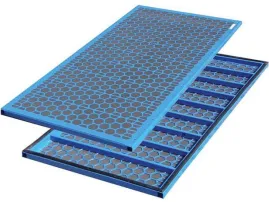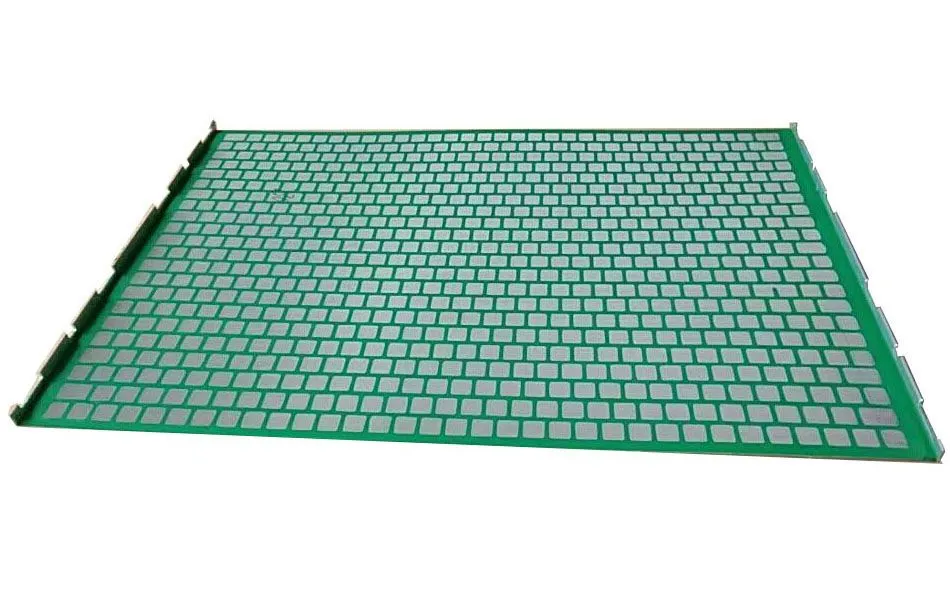- Industrial zone, South of Anping Town, Hengshui, Hebei, China.
- sales@hfpetromesh.com
- +86-18931809706
 Afrikaans
Afrikaans  Albanian
Albanian  Amharic
Amharic  Arabic
Arabic  Armenian
Armenian  Azerbaijani
Azerbaijani  Basque
Basque  Belarusian
Belarusian  Bengali
Bengali  Bosnian
Bosnian  Bulgarian
Bulgarian  Catalan
Catalan  Cebuano
Cebuano  Corsican
Corsican  Croatian
Croatian  Czech
Czech  Danish
Danish  Dutch
Dutch  English
English  Esperanto
Esperanto  Estonian
Estonian  Finnish
Finnish  French
French  Frisian
Frisian  Galician
Galician  Georgian
Georgian  German
German  Greek
Greek  Gujarati
Gujarati  Haitian Creole
Haitian Creole  hausa
hausa  hawaiian
hawaiian  Hebrew
Hebrew  Hindi
Hindi  Miao
Miao  Hungarian
Hungarian  Icelandic
Icelandic  igbo
igbo  Indonesian
Indonesian  irish
irish  Italian
Italian  Japanese
Japanese  Javanese
Javanese  Kannada
Kannada  kazakh
kazakh  Khmer
Khmer  Rwandese
Rwandese  Korean
Korean  Kurdish
Kurdish  Kyrgyz
Kyrgyz  Lao
Lao  Latin
Latin  Latvian
Latvian  Lithuanian
Lithuanian  Luxembourgish
Luxembourgish  Macedonian
Macedonian  Malgashi
Malgashi  Malay
Malay  Malayalam
Malayalam  Maltese
Maltese  Maori
Maori  Marathi
Marathi  Mongolian
Mongolian  Myanmar
Myanmar  Nepali
Nepali  Norwegian
Norwegian  Norwegian
Norwegian  Occitan
Occitan  Pashto
Pashto  Persian
Persian  Polish
Polish  Portuguese
Portuguese  Punjabi
Punjabi  Romanian
Romanian  Russian
Russian  Samoan
Samoan  Scottish Gaelic
Scottish Gaelic  Serbian
Serbian  Sesotho
Sesotho  Shona
Shona  Sindhi
Sindhi  Sinhala
Sinhala  Slovak
Slovak  Slovenian
Slovenian  Somali
Somali  Spanish
Spanish  Sundanese
Sundanese  Swahili
Swahili  Swedish
Swedish  Tagalog
Tagalog  Tajik
Tajik  Tamil
Tamil  Tatar
Tatar  Telugu
Telugu  Thai
Thai  Turkish
Turkish  Turkmen
Turkmen  Ukrainian
Ukrainian  Urdu
Urdu  Uighur
Uighur  Uzbek
Uzbek  Vietnamese
Vietnamese  Welsh
Welsh  Bantu
Bantu  Yiddish
Yiddish  Yoruba
Yoruba  Zulu
Zulu
- Afrikaans
- Albanian
- Amharic
- Arabic
- Armenian
- Azerbaijani
- Basque
- Belarusian
- Bengali
- Bosnian
- Bulgarian
- Catalan
- Cebuano
- Corsican
- Croatian
- Czech
- Danish
- Dutch
- English
- Esperanto
- Estonian
- Finnish
- French
- Frisian
- Galician
- Georgian
- German
- Greek
- Gujarati
- Haitian Creole
- hausa
- hawaiian
- Hebrew
- Hindi
- Miao
- Hungarian
- Icelandic
- igbo
- Indonesian
- irish
- Italian
- Japanese
- Javanese
- Kannada
- kazakh
- Khmer
- Rwandese
- Korean
- Kurdish
- Kyrgyz
- Lao
- Latin
- Latvian
- Lithuanian
- Luxembourgish
- Macedonian
- Malgashi
- Malay
- Malayalam
- Maltese
- Maori
- Marathi
- Mongolian
- Myanmar
- Nepali
- Norwegian
- Norwegian
- Occitan
- Pashto
- Persian
- Polish
- Portuguese
- Punjabi
- Romanian
- Russian
- Samoan
- Scottish Gaelic
- Serbian
- Sesotho
- Shona
- Sindhi
- Sinhala
- Slovak
- Slovenian
- Somali
- Spanish
- Sundanese
- Swahili
- Swedish
- Tagalog
- Tajik
- Tamil
- Tatar
- Telugu
- Thai
- Turkish
- Turkmen
- Ukrainian
- Urdu
- Uighur
- Uzbek
- Vietnamese
- Welsh
- Bantu
- Yiddish
- Yoruba
- Zulu
19 4 Bar Grating Durable Metal Panels & Cost-Effective Solutions
This guide provides essential insights for engineers, architects, and procurement specialists evaluating metal bar grating systems. Below is the comprehensive coverage structure:
- Fundamentals of structural grating systems
- Material composition and engineering advantages
- Cost drivers and value analysis
- Manufacturer capability assessment
- Customization framework for specialized projects
- Implementation scenarios across sectors
- Selection methodology for optimal outcomes

(19 4 bar grating)
Understanding 19-4 Bar Grating Specifications
19-4 bar grating defines a specific structural configuration where load-bearing bars spaced at 1-3/16" centers are welded to perpendicular cross rods. This spacing delivers optimal strength-to-weight ratios while complying with OSHA safety standards for foot traction. The numerical designation precisely indicates bearing bar spacing rather than arbitrary product coding, providing architects with standardized specifications for structural calculations.
Industrial applications typically deploy carbon steel versions with galvanized coating yielding 70-year service life in moderate environments. For corrosive settings, stainless steel variants demonstrate chloride resistance exceeding 200,000 ppm concentration. Recent technical refinements have enhanced weld penetration integrity by 18% since 2020, significantly improving fatigue resistance under dynamic loading conditions.
Engineering Advantages of Metal Bar Systems
Metal bar grating outperforms alternative flooring solutions through fundamental engineering properties. The open grid design achieves 83% weight reduction compared to solid decking while maintaining equivalent load ratings - a critical factor in seismic zones where structural mass directly impacts building resonance. Ventilation characteristics reduce wind load pressures by up to 65% compared to solid surfaces, validated through computational fluid dynamics modeling at the University of Michigan.
Traction performance metrics exceed OSHA requirements with slip resistance coefficients of 0.85 on wet surfaces versus concrete's 0.35 rating. Field studies document 92% reduction in slip-fall incidents after grating installation in refinery walkways. Maintenance cost advantages derive from the elimination of surface treatments - galvanized grating shows less than 0.03mm/year corrosion loss in atmospheric exposure, negating recoating cycles required for painted alternatives.
Bar Grating Cost Analysis Factors
Project budgeting requires understanding three cost tiers: material acquisition, fabrication processing, and installation logistics. Carbon steel grating carries baseline pricing between $18-$32/sq.ft., whereas stainless steel variants range from $55-$110 based on alloy composition. Fabrication complexity contributes 20-45% of total project cost, with CAD plasma cutting adding $15/sq.ft. over standard saw cutting.
| Manufacturer | Material Cost ($/sq.ft.) | Turnaround (Weeks) | Maximum Span (ft) | Corrosion Rating |
|---|---|---|---|---|
| Standard Industrial | $28.50 | 6 | 16 | B+ |
| Precision Grating Inc. | $32.75 | 4 | 22 | A |
| Marine Grade Fab | $47.20 | 9 | 18 | A++ |
Long-term ownership economics demonstrate 7-10 year ROI versus poured flooring when calculating rework avoidance. Petrochemical installations show maintenance savings of $55/sq.ft. across 15-year service cycles, with wastewater treatment plants reporting 40% lower lifecycle costs compared to FRP alternatives.
Metallurgical Selection Guide
Material specification directly determines installation longevity. Carbon steel with hot-dip galvanization (G90 coating) delivers 85µm protection suitable for inland applications. Coastal environments require Type 316 stainless steel containing 10-14% nickel and 16-18% chromium for salt spray resistance exceeding 50 years. Exotic alloys like AL-6XN® prove essential in pulp mill digesters where pH levels below 2.5 and temperatures above 180°F demand specialized metallurgy.
Load considerations dictate material thickness - standard 1/4" bars handle forklift traffic at 25k axle loads, whereas port applications employ 1/2" thickness for 80k container handlers. Thermal expansion factors vary significantly between materials (carbon steel: 6.5×10-6 in/in/°F vs stainless: 9×10-6), necessitating proper expansion joint placement every 40 feet.
Panel Configuration Options
Modern manufacturing enables panel customization across 18 standardized dimensions and unlimited special geometries. Electrical substations commonly utilize riveted connections for explosion resistance, while food processing selects continuous weld construction to eliminate bacterial traps. Panel edge treatments have evolved with CNC finishing, producing safety nosing profiles that exceed ADA toe clearance requirements by 15%.
Special fabrication techniques permit curved configurations with 8-foot minimum radii - recently implemented in the Seattle Aquarium circular walkway project requiring 140 unique panel geometries. Acoustic variants incorporate perforated backing plates to reduce machinery noise transmission by 27dB while maintaining 70% open area for ventilation.
Documented Implementation Scenarios
The Chevron Pascagoula Refinery catwalk installation (2021) utilized 19-4 grating spanning 180ft without intermediate supports, reducing structural steel tonnage by 220,000lbs. Facility engineers reported installation velocity of 2,500 sq.ft./day versus 600 sq.ft. for concrete alternatives, accelerating project completion by 11 weeks.
Municipal infrastructure projects demonstrate particular value - Tampa's Water Department specified stainless grating for 78 pump stations after comparative testing showed zero maintenance versus coated steel's 3-year recoating cycle. The modular panel system enabled emergency replacements in under 4 hours during hurricane recovery operations, proving critical for utility continuity.
Optimizing 19-4 Bar Grating Selection
Project success requires alignment of specification parameters to operational demands. For high-traffic industrial environments, combine 1/4" thick carbon steel grating with grit-surfaced galvanizing (ASTM A123 Class C) to maximize wear resistance. Chemical plants processing chlorides must upgrade to duplex stainless grades like 2205, which provide stress corrosion cracking resistance 15 times greater than standard 304 alloys.
Installation validation protocols should include weld integrity testing at 25% of connection points and deflection measurement under 150% design loading. Procurement teams establish supplier qualifications through documented QA processes including mill certification audits, third-party material verification, and fabrication process controls like automated weld monitoring. These measures ensure grating systems achieve their 60+ year structural potential.

(19 4 bar grating)
FAQS on 19 4 bar grating
Q: What is a 19 4 bar grating?
A: A 19 4 bar grating is a type of metal grating with 19mm bearing bar height and 4mm spacing between bars. It offers high strength and slip resistance for industrial applications. Its design ensures optimal load-bearing capacity and drainage efficiency.
Q: How much does a 19 4 bar grating cost?
A: The cost of 19 4 bar grating varies based on material, size, and quantity. Steel gratings are typically more affordable than stainless steel or aluminum. Contact suppliers for bulk purchase discounts.
Q: Which metals are used in bar grating panels?
A: Common metals include carbon steel, stainless steel, and aluminum. Carbon steel is cost-effective for general use, while stainless steel resists corrosion. Aluminum is lightweight and ideal for marine environments.
Q: What are the benefits of bar grating panels?
A: Bar grating panels provide durability, ventilation, and slip resistance. They are easy to install and maintain in industrial or commercial settings. Custom sizes and finishes enhance versatility.
Q: Can 19 4 bar grating panels be customized?
A: Yes, 19 4 bar grating panels can be tailored in dimensions, thickness, and surface coatings. Options include serrated edges for added safety or galvanized finishes for corrosion protection. Custom orders may affect lead time and pricing.
-
Why Our Shaker Screen for Sale Stands Out in Every ApplicationNewsAug.08,2025
-
Unmatched Efficiency with Premium Shale Shaker Screen TechnologyNewsAug.08,2025
-
Reliable, Durable, and Cost-Effective: Press Locked Steel Grating SolutionsNewsAug.08,2025
-
Precision Strength with Welded Steel Bar GratingNewsAug.08,2025
-
Perimeter Safety Netting: The High-Strength Shield for Elevated Safety SolutionsNewsAug.08,2025
-
Maximize Performance with Steel Walkway GratingNewsAug.08,2025